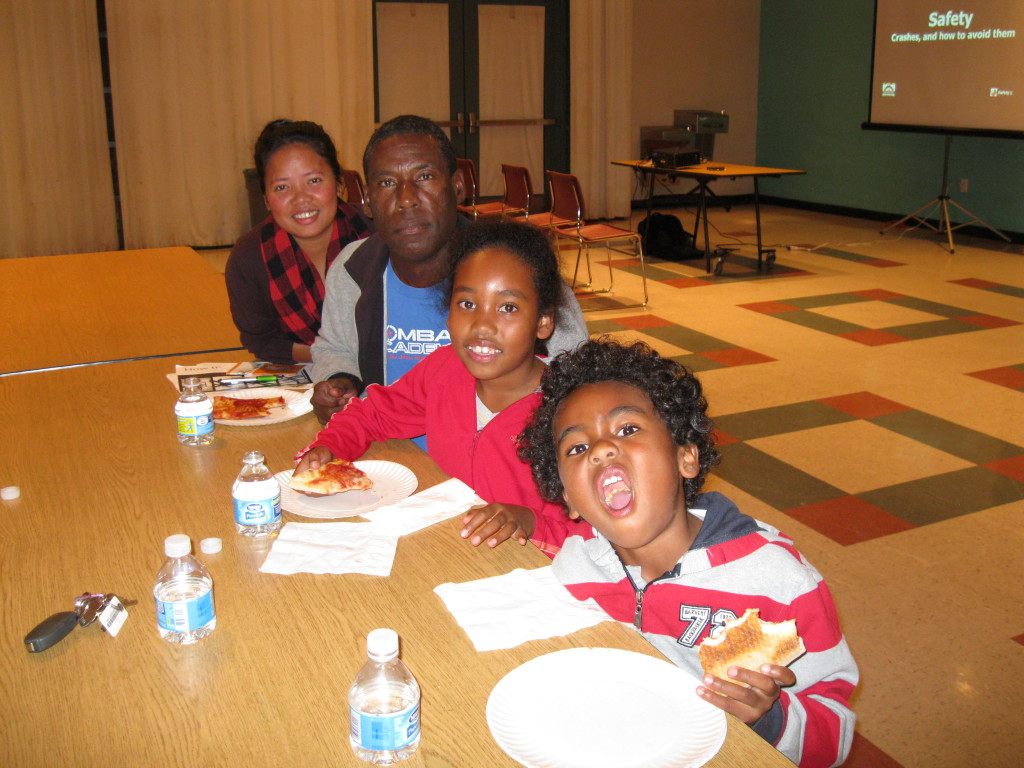
Just how safe is it to ride or walk in Coronado? Not very it turns out. Among cities of similar size, Coronado ranked second overall in the number of pedestrians killed or injured by a motor vehicle and number one for bicyclists, according to a survey conducted by California Office of Traffic Safety in 2012.
The stats are alarming, especially in a community were 80% of the kids either ride or walk to school and after-school activities, and where many adults rely on bikes get to work or to run errands.
“That’s the point. Many more people ride and walk here [than the other 108 similar size cities survived by the traffic study],” said Mariah VanZerr, Active Transportation Planner for the City of Coronado. Cities deemed safer don’t have as many people riding or walking.”
VanZerr believes Coronado’s “poor ranking reflects the need for better bike and pedestrian infrastructure and safety education.”
To that end she procured a $36,000 grant from the State of California Active Transportation Program to conduct Safe Routes to School Workshops for parents and students. Over the next year there will be several safety and skills training workshops at all four school sites (Village and Silver Strand Elementary, Coronado High School and Coronado Middle School).
The first workshop was held last week at CMS, where there was pizza (donated by Village Pizzeria) and free gift cards from Holland’s Bicycles. The turnout was light; there was more pizza than people. Given that the holiday season was well underway and this was the first workshop, a poor showing wasn’t surprising.
The future workshop dates have not been determined, but the city and school district are planning the workshops beginning early next year and continuing through 2016.
The plan is to hold two workshops per site in order to reach all of the students, VanZerr explained. Some will be geared to parents, others to students. The latter will be age appropriate. You don’t have to have a child in the district to attend a parents’ workshop, VanZerr said.

Brian Gaze, program director for Circulate San Diego, explained that the goal at this workshop was to teach parents road safety so that they can serve as role models for their children. His organization works to create more “walkable and bikeable neighborhoods” and was hired by the city to run the workshops.
Circulate has run bike safety programs in a number of California cities and they are “considered experts in bicycle safety education,” VanZerr said.
Most parents who did attend brought their children along so they could learn together.
Presenters demonstrated the safest way to ride, basic bicycle maintenance and how best to thwart bicycle thieves.
One big takeaway from the workshop was that the most important thing you can do as a rider is to be where you are supposed to be. For example, drivers expect bicyclists to be traveling in the same direction they are. “To be safe, be predictable,” said Kevin Barossa of the San Diego County Bicycle Coalition. The coalition provided certified instructors for the workshop.
Also, be conspicuous, especially at night. Wear lightly colored clothing and ideally a reflective jacket. A white headlight and a rear reflector are not only recommended, they are required by law.

Where to ride is almost as important as how you ride. Inexperienced riders often veer too far to the right, where they feel safe but are vulnerable to drivers opening the car door or making right hand turns.
With the plethora of signs posted and painted on Coronado sidewalks most bicyclists know that you are not allowed to ride on the sidewalk on Orange Ave between the 800 block and past the Hotel del. Many don’t know that riding on the sidewalk is also prohibited in front of the Coronado Library, the police and fire station, the sidewalk in front of the Shores, the Ferry Landing, and the 100 block of Orange.
While you can ride on all the other sidewalks, you probably shouldn’t, Gaze advised. You are much better off riding your bike in the street than you are on a sidewalk. Again, it’s a matter of predictability. Riders don’t expect to see cars on sidewalks, just as drivers don’t expect to see bikes on sidewalks. Yet cars intersect with sidewalks all the time, in alleys and driveways. “Just because something feels safe doesn’t mean it is,” Gaze said.
Lest any one forget this useful information, handouts were available on how to lock your bike, putting on a helmet properly, where you can’t ride, and a map marking bike paths, traffic signals and crossing guard locations.
“One way to make the streets of Coronado safer for everyone, is for all of us [drivers, riders and pedestrians] to follow the rules and to be considerate of each other,” said Zinea Young, co-owner of Holland’s Bicycles. To follow the rules, you have to first know them. Attending a Safe Routes workshop is a good place to start.
For more Coronado bicycle safety, rules, tips and information, click here.




